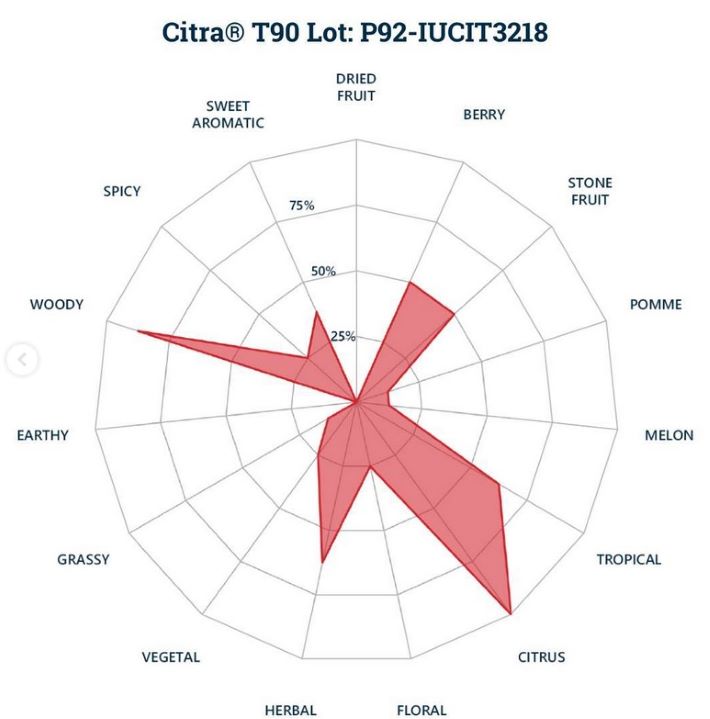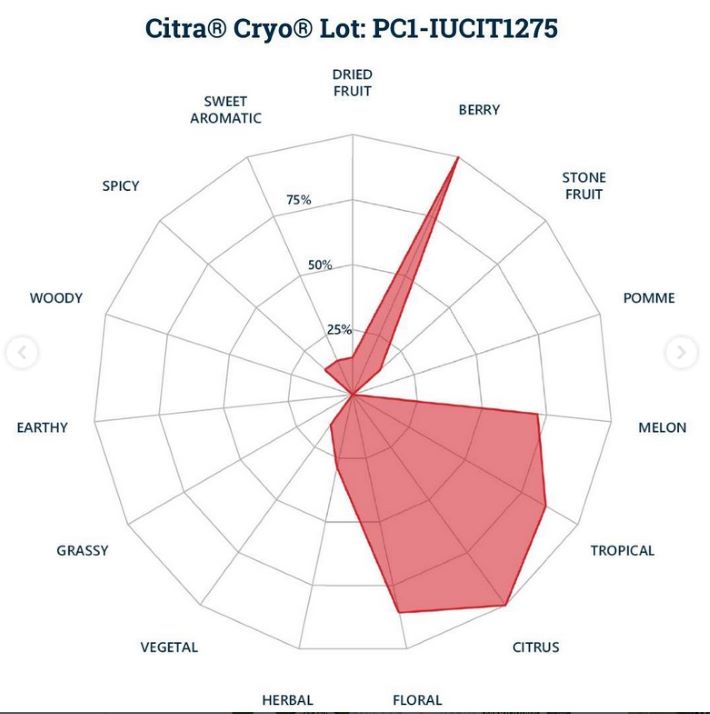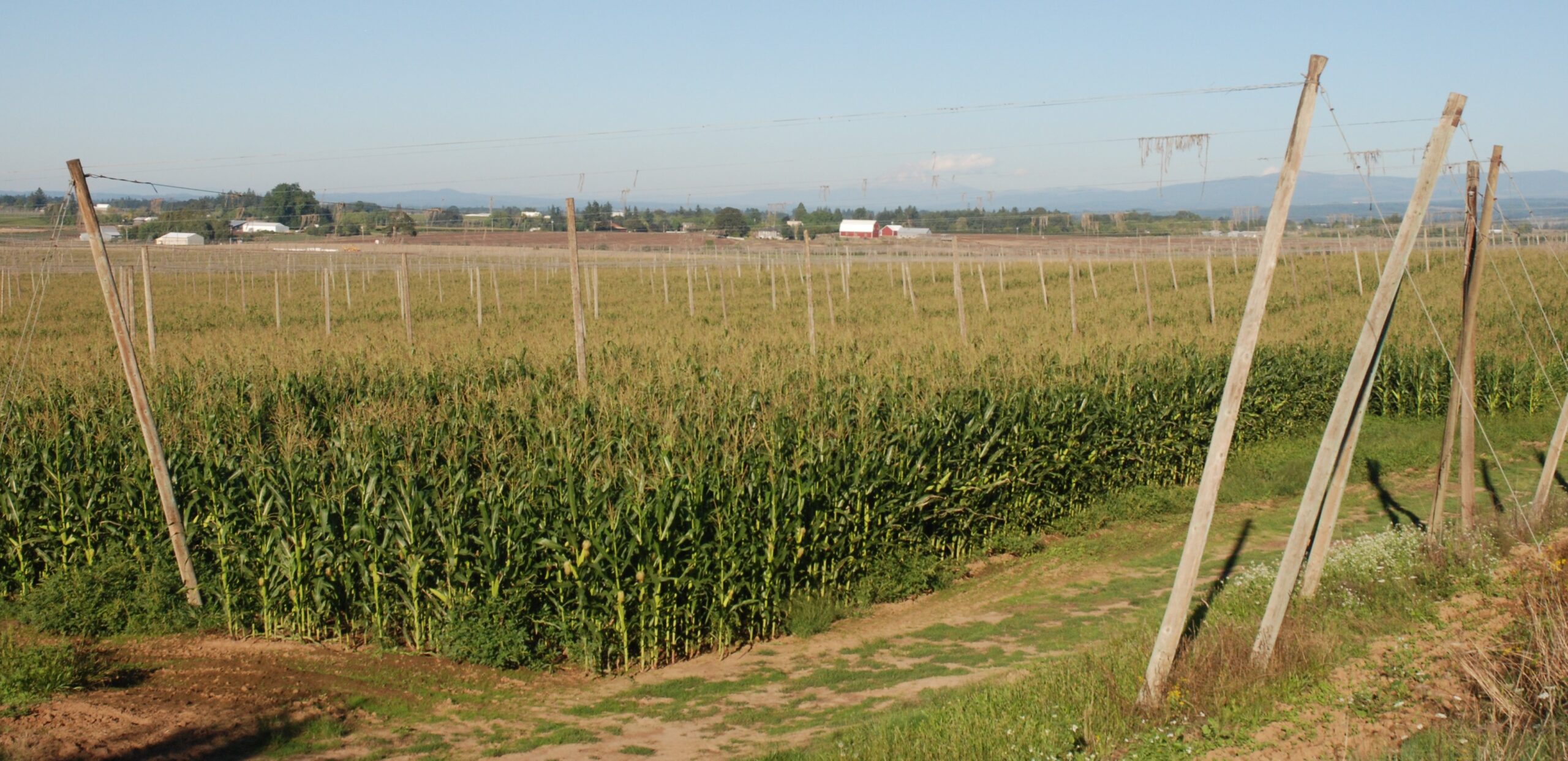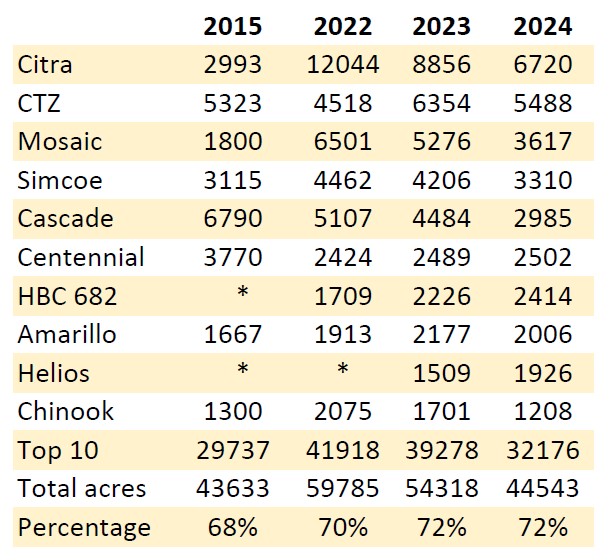* 2024 crop
* Classifying thiol impact
* Krush with a K
* Wanna bet?
* Hop profile: Ekuanot
* More reading
Welcome to Vol. 8, No. 4. Hop harvest has begun, and in some regions finished, in the northern hemisphere. Plenty of photos of bright green cones in my Instagram feed, as well as a couple of videos of trellises that went down in stormy weather. Here is an example from @westcoasthopbreeding. Next month, I plan to post a list of fresh hop festivals. Feel free to send me information.
ACRES + YIELD = HOPS
This is the way it is supposed to work. Plant more acres, get more hops. String fewer, get fewer. Increase yield, get more hops. Pre-harvest estimates suggest that has happened in both the US Northwest and Germany.
Each of Germany’s five hop growing regions (Hallertau is by far the largest) provided estimates as harvest began. Production in the Hallertau increased 21 percent over 2023, to 42,350 metric tons, while overall German production grew 18.8 percent to 48,964 metric tons (98.1 million pounds). Why? Yields in Germany were up 20.5 percent. Although yields in 2023 had improved on 2022’s particularly disappointing harvest, they were still below average.
Important numbers for those interested in traditional landrace varieties: Hallertau Mittelfrüh 565 metric tons (+4.6 percent), Hersbrucker 1,714 metric tons (+38.2 percent), and Spalter Select 906 metric tons (+26.7 percent). Yes, Select is the bred version of Spalt Spalter, but there is no published estimate for Spalt Spalter, which is planted on far fewer acres.
The overall harvest yielded about nine percent more hops than an average crop the last 10 years, which a press releases notes will be sold into a market that is “. . . oversupplied.”
That oversupply is why farmers in the Northwest removed almost 10 percent of acreage from production between 2022 and 2023 and another 18 percent between 2023 and 2024. Higher yields in 2023 compared to 2022 offset the cuts in acreage and overall production increased two percent, from about 102 million barrels to 104 million barrels.



